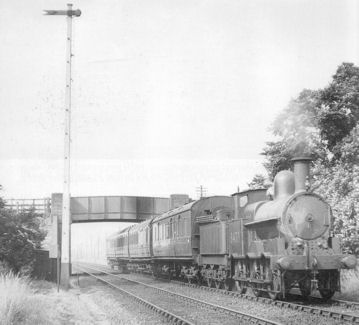
This page is an introduction to railways in Trumpington, including personal recollections. For additional details, see the Railways of Trumpington, 1845-2010 by Edmund Brookes, which discusses the evolution of the railway network and the situation in late 2010. There is an updated paper, Railways and Trumpington, 1845-2019, also by Edmund Brookes.
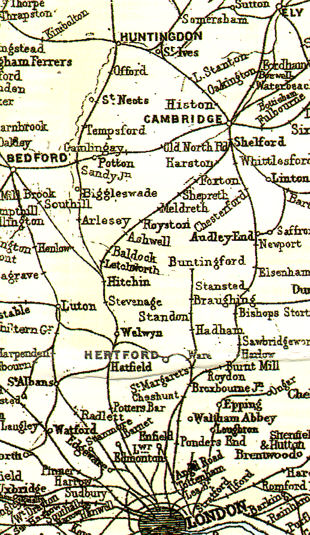
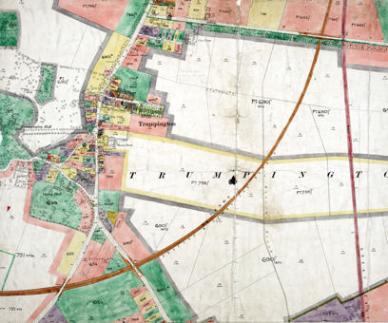
Two railways have passed through the parish: the lines between London Kings Cross and Liverpool Street and Cambridge (merging just south of Trumpington at the ‘Shepreth Branch Junction’ in Great Shelford) and the line between Bletchley, Bedford and Cambridge.
Edmund Brookes gives an enthusiast’s history of the development of these lines and the complex relationships between the companies that built the routes and services. He describes how the line from Liverpool Street to Cambridge opened by 1845 and was joined by the line from Kings Cross to Cambridge in 1851. The line from Bedford to Cambridge opened in 1862, running alongside the London route on the approach to Cambridge station.
Long Road railway crossing and gatehouse
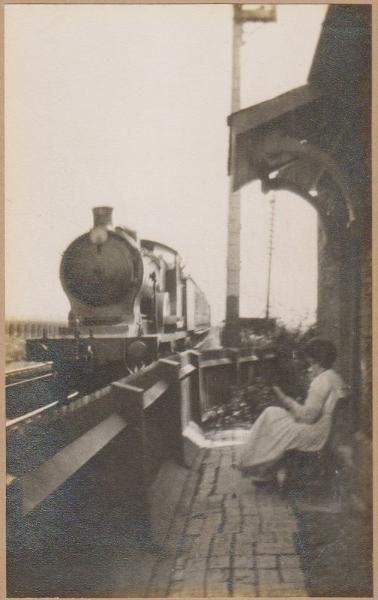
Jane Fairweather and her father have been researching the railway crossing and gatehouse on Long Road, Trumpington (April 2015). Jane’s great grandfather, Sam Fairweather, worked on the railways and was at one time the gatekeeper at Long Road.
Jane writes that the photograph was taken by Regent Studios, Cambridge, and probably dates from the 1920s. The photograph is of Jane’s great grandmother, Sarah Fairweather (née Charter), sitting outside the gatehouse. She had married Sam Fairweather in Cambridge in 1907. They had one son, Albert, born 1908. Sam joined the railway circa 1912 as a platelayer; he joined the Amalgamated Society of Railway Servants in 1913. He was the gatekeeper at Long Road for a number of years, then they moved back to Cambridge. Sarah died in 1941 and Sam in 1974. In 1923, Albert gave his address as ‘Long Road’ when he started his apprenticeship at Reynolds. Jane’s grandparents, Albert Fairweather and Clara Seekings, married in Trumpington in 1932.
Howard Slatter has checked the 1928 Ordnance Survey map which shows Long Road crossing the two railway lines: the western line (the LNWR line to Bedford) went under a bridge but the eastern one (the former GER line) used a level crossing. There was a signal box at the north-west corner of the crossing (see Trumpington Past and Present, p. 20). A building is marked the south-west corner, which Howard has concluded was the crossing keeper’s gatehouse. From 1871 to 1911, census records consistently refer to this cottage in Long Road (or Mill Road as it used to be called). There is then a dearth of official records until 1934, when the electoral registers show a couple called Smith living there until 1935 (Roy Smith is shown in the photographs in the book). The crossing was replaced by another bridge in 1935 and this would have obliterated the gatehouse.
Lucky Escapes
The effect of ‘railway mania’ on Trumpington may have been much more marked than the two lines that eventually cut across the south and east of the parish. From 1836 to 1850, there were a number of proposals for railway lines into Cambridge which would have required a route through Trumpington and a second ‘Cambridge’ station to the north of the parish, but fortunately the Parliamentary Bills for these routes were all rejected.
The sites for proposed stations included Edelston’s Farm (Blackland Farm, now known as River Farm, at the west end of Latham Road), near Coe Fen, near The Leys and either side of the Botanic Gardens. The 1848 Bill by the Royston and Hitchin company and the 1850 Bill by the Great Northern Railway for the Shepreth to Cambridge line proposed a station close to the Botanic Gardens, while the 1851 Bill for the Great Northern Railway route from Shepreth to Cambridge had a proposed station adjacent to Silver Street. When the Bedford to Cambridge line was completed in 1862, the promoter agreed to share the existing Cambridge station and contribute to its rebuilding, but the initial plan had been to build a separate station on the Brooklands Avenue side of Hills Road (Bonovia, 1995, Fellows, 1976b, Warren and Phillips, 1987).
Lineside Fires
Writing in November 2010, David Stubbings added his memories of lineside fires, which “were a danger in the era of steam locomotives, as these engines could belch out red hot cinders, especially when working hard, and ignite wayside vegetation. I recall two periods in the 1940s when conflagrations occurred in the Parish of Trumpington.”
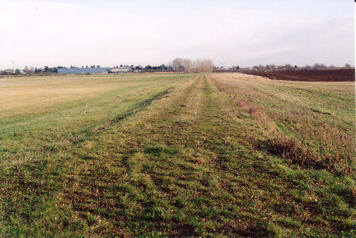
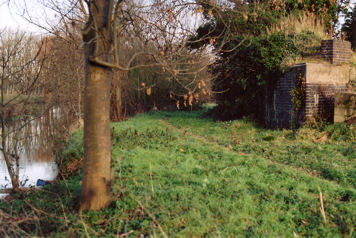
“The LMS (ex-LNWR) double track line from Cambridge to Bletchley ran in the parish from Long Road railway bridge curving to enter the cutting to go under Shelford Road bridge into the deepest part of the cutting and then under Hauxton Road bridge to cross flatter land, over the Cam (Granta) and on to Lord’s Bridge Station. Between the cutting and the houses of Bishops Road there were two fields, the larger, now Lantree Crescent, was cultivated and the other, behind our house was rough pasture, to which we had full access to play. The sides of the cutting were clothed with grass and perennials such as knapweed, a few small bushes, but no trees. In a windy, arid March there would be outbreaks of fire in the long dry grass on the Bishops Road side, which would spread quite quickly, even into the grass field. To the joy of small boys, the Fire Brigade would attend and extinguish the fires with beaters and hose reel jets. Little real fire damage was done except for a few charred fence posts. There were rarely fires at other times of the year in this area. Presumably the south side was mainly affected because the locomotive would still be working reasonably hard on the downline, having not long left Cambridge Station. Allegations that we kept the fires going until the Brigade arrived were untrue!”
“The situation concerning the LNER (ex GE) mainline was different. Fires here occurred generally at the height of the harvest. The fields to the west of the line were at that time, entirely arable, this was before the showground was established, and wheat and barley were among the crops grown. It seemed to be a hazard which farmers accepted that their corn could catch fire from the trains, and which did happen. One I remember in particular was when, to the south of the farm trackway (also a public right of way) from the High Street, next to the Village Hall to the Red Cross on Hills Road (no Paget Road, Foster Road or Addenbrooke’s then), a field of barley next to the line was extensively burnt. Once the farmer, possibly Mr Cornwell, Rachel’s father, had given permission, those villagers with poultry, etc., including myself, descended on the charred field to glean the heads of barley lying scorched on the ground. But burnt wheat crops were preferred! Many of us kept hens at that time, as eggs in the shops were rationed, and enough little-damaged grain could be gleaned to last several months. Presumably the railway company compensated the farmer. That is how I remember the lineside fires.”
Val Burden (née Valerie Charge) has added similar recollections of the fields and railway. Val has lived in New Zealand for many years, but her family moved into 112 Paget Rd when the house was new and lived there for 25 years, so she has many memories of Trumpington. She writes (May 2011) “I was very interested in your photographs especially the one of the fields along the track to Addenbrooke’s. We walked our dog along there (no Addenbrooke’s at the time) and he was forever running into the fields to dig up moles, we would chase after him only to be accosted by the farmer, Mr Cornwall, who was not amused to see us in his field of Friesians with a dog, you could get great mushrooms from there as well. There used to be a copse on the field with an enormous rookery in it but I expect that is long gone? The two railway lines were great for train spotting and in the summer sparks from the steam trains would set the corn alight and the fire engine would come screaming along Paget Road to put it out. Eventually realising you couldn’t win against a steam engine, lucerne – or perhaps alfalfa – was planted in a wide band next to the line as it would stay green and alas no more fire engines to add excitement to our lives.”
All Change at Bletchley
Margaret Marrs used the cross-county route long before she moved to live in Trumpington. Writing in December 2010, she remembered “When I was a student (1948-1951), the route to Cambridge from the north was: Main line to Bletchley, then change trains for the line to Cambridge. It may have only been imagination, but it seemed as if the trains were scheduled so that one had a couple of hours to wait at Bletchley. Of course, this was the changing place for Oxford too. The Cambridge train stopped at every station, I think at the time the regular travellers could recite them from memory.”
“On one occasion I was coming from Lime Street, Liverpool, and something went wrong with the engine. There is an incline out of that station, so it was something like 3 hours before they could get the broken-down engine out of the way and a replacement produced. Of course there was no possibility of going to my aunt’s for an extra night, we had to keep term in those days. Obviously we were so late at Bletchley that our connection was long gone (similarly the Oxford train). I don’t know how many were going to Oxford, but I think there were only 5 of us for Cambridge, and a 3 carriage train was produced to complete our journey.”
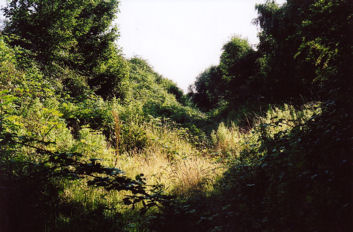
“I didn’t know Trumpington in those days, except in Rupert Brooke’s poem, but in 1962 I found myself living here. My next door neighbours then were Jack and Joy Harper. I think they were the original owners. They had blackberries growing, and these had got rather out of control, so they used to pull them up and throw them on to the railway cutting where they easily established. Harpers would encourage us to pick the fruit (I guess this was after the line was closed to traffic) but they used to produce a very good crop.”
In his book about the Cambridge line, Michael Bonavia writes about the straggling cross-country route between Bletchley, Bedford and Cambridge. He says there were about eight trains a day in the 1930s, calling at all stations to Bedford then fast to Bletchley. There could have been a through service from Cambridge to Oxford, but “connections were however not very good and it was a standing joke in both universities that ‘cultural exchanges’ often had to be effected in the waiting room at Bletchley” (Bonavia, 1995, page 105-06).
Growing up in Trumpington in the 1940s and 1950s
In his recollection of railway and bus services in Trumpington, Barry Clarke writes about running from his home in Shelford Road to watch the Bedford trains going through the cutting and cycling over the fields to see trains on the main line.
Brian Goodliffe remembers the railway lines as a boy and also his father’s experience as a tractor driver.
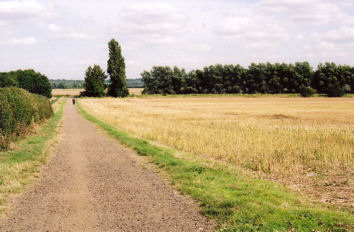
Brian writes (December 2010) “Back in the 1950s, my father would set off from Church Farm on his Allis-Chalmers crawler tractor, towing a bowser of tractor vaporising oil (TVO) – what most tractors ran on before diesel tractors became popular) and behind this was pulled a plough, cranked up so the working parts cleared the road). Steering very gently so the tank-type tracks didn’t chew up the road surface, he would cross the High Street into Anstey Way, then left into Paget Road. He would follow Paget Road round to the corner nearest Fawcett School, where he set off down the track that led out onto Pemberton’s fields.”
“If his final destination was the area known as Red Cross, he had to cross both sets of railway lines (LMS and LNER) with his caterpillar tractor. There were no telephones to the signal box or flashing warning lights. Just a wooden five-bar gate on each side of the tracks that opened outwards away from the lines and wooden railway sleepers laid to make a rough level crossing. The trains on the LMS line were fairly few in number and generally slower, so with both gates open it was a quick look both ways and a trundle across, closing the gates behind him. When he got to the LNER lines he had to be a little more circumspect. The trains were much more frequent and seemed decidedly faster. Fortunately you could often see the smoke in the distance before you could see the loco. This was fine in clear weather. In fog it was a whole different experience. Because of the nature of the beast it was rather impractical to stop the tractor engine to listen for trains. And anyway, by the time he’d started it on the handle again the situation could have changed. So it was a case of opening both gates, saying a quick prayer, and going for it! Now a crawler tractor towing a bowser and plough over a level crossing isn’t exactly a speedy vehicle, but he always got away with it, although sometimes it was a close call!”
“Like most boys, standing by those wooden gates I was fascinated by the sheer size of the locomotives close-to and the length of the trains: some up to fourteen carriages long. In those days, if you bought a ticket you expected to have a seat; and trains normally had enough carriages to accommodate this. Children playing on the railways was as prevalent then as it is now. Except we had more sense than to try and deliberately cause damage, injury or derailment. One favourite pastime was to put a (pre-decimal) penny or halfpenny on the top of the rail to be run over by the next train that came along. Upon retrieving the coin, it would be squashed to much larger than its original diameter. You would add it to your collection of ‘treasures’, like boys in the blitz used to collect bits of shrapnel.”
“Long Road bridge was a favourite place to go train spotting. We’d congregate over the LNER lines as they were the most productive. Then someone would shout: “There’s one on the other line!” And we’d all run like stink to the other end of the bridge to try and get its number. Oh happy days!”
For more of Brian’s recollections, see his Childhood Memories.
The Bedford-Cambridge route: from Railway to Busway
Edmund Brookes writes about the closure of the Bedford-Cambridge line. Freight and passenger services were withdrawn on 8 December 1968. The track was removed in 1969 and the route became a nature corridor. This was particularly apparent in the railway cutting between Hauxton Road, Shelford Road and the allotments, with trees growing on the embankment and wildlife colonising the stream and grassy areas. The cutting was used as an informal footpath from the 1970s, as was the rest of the route to Long Road. A water pipe to irrigate farmland was laid in the cutting for Trumpington Farm Company in the 1970s. A major gas main was then installed through the cutting from August 1985. The Cambridgeshire Guided Busway was constructed along the route from the Park & Ride site to Cambridge station from 2008-10, with the Busway opening in 2011.

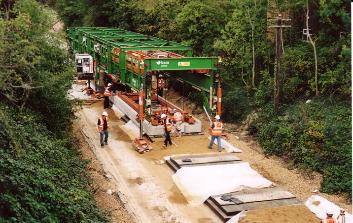
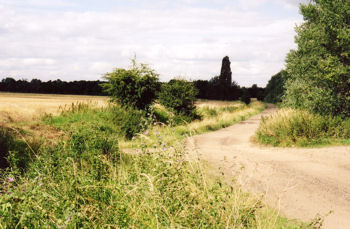
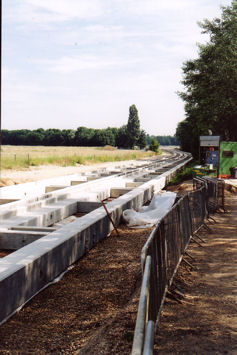
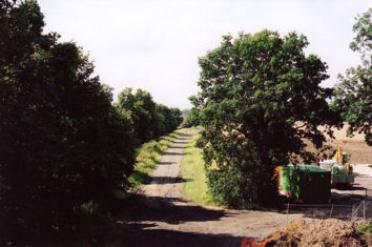
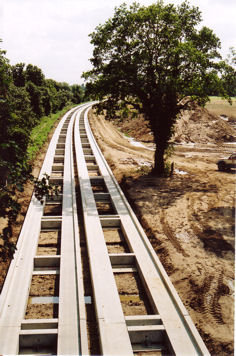
Trumpington Railway Station, 1922
For a short period in 1922, there was a railway station in Trumpington, used for that year’s Royal Agricultural Society of England show. This was on a site to the north of Long Road, in the V-shaped gap between the London and Bedford railway lines. There is information about the station in Edmund Brooke’s page on the Railways of Trumpington and also on the Disused Stations web site.
Cambridge South Railway Station, c. 2025
In 2023, work is well underway on Cambridge South Station to serve the Cambridge Biomedical Campus, to be located between the Busway bridge and Addenbrooke’s Road bridge.
Sources
Allen, Cecil J. (1955). Great Eastern Railway. Shepperton: Ian Allan.
Bonavia, Michael R. (1996). The Cambridge Line. Shepperton: Ian Allan.
Fellows, Reginald B. (1976a). London to Cambridge by Train 1845-1938. Cambridge: Oleander
Press.
Fellows, Reginald B. (1976b). Railways to Cambridge. Actual and Proposed. Cambridge:
Oleander Press.
Grinling, Charles H. (1898). History of the Great Northern Railway. George Allen & Unwin.
Mitchell, Vic and Mott, Allan (2006). Potters Bar to Cambridge. Midhurst: Middleton Press.
Mitchell, Vic and Smith, Keith (2007). Bletchley to Cambridge. Midhurst: Middleton Press.
Simpson, William (1983). Oxford to Cambridge Railway. Vol. 2: Bletchley to Cambridge.
Poole: Oxford Publishing.
Warren, Alan and Phillips, Ralph (1987). Cambridge Station. A Tribute. : British Rail.
Cambridge Railway Station (Wikipedia).